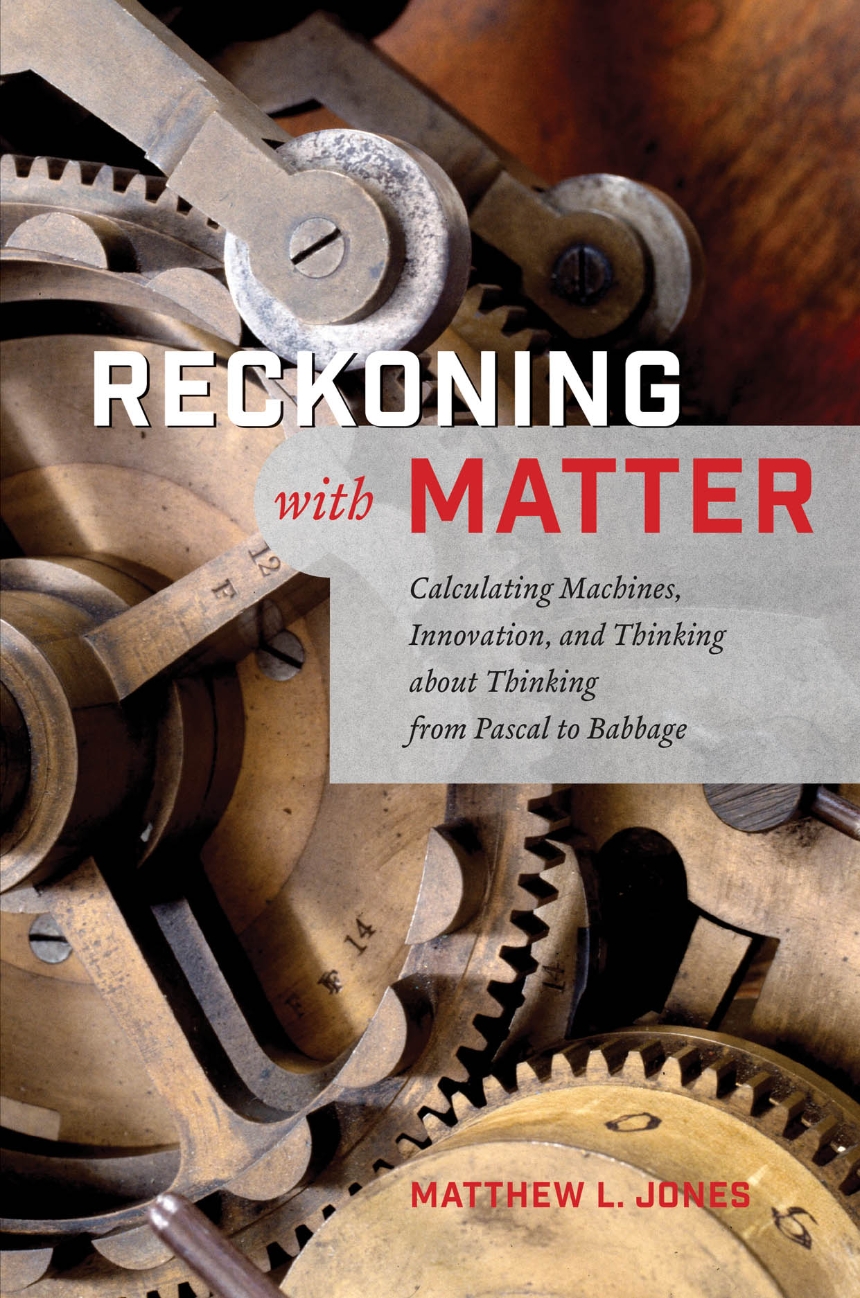Reckoning with Matter
Calculating Machines, Innovation, and Thinking about Thinking from Pascal to Babbage
9780226411460
9780226411637
Reckoning with Matter
Calculating Machines, Innovation, and Thinking about Thinking from Pascal to Babbage
From Blaise Pascal in the 1600s to Charles Babbage in the first half of the nineteenth century, inventors struggled to create the first calculating machines. All failed—but that does not mean we cannot learn from the trail of ideas, correspondence, machines, and arguments they left behind.
In Reckoning with Matter, Matthew L. Jones draws on the remarkably extensive and well-preserved records of the quest to explore the concrete processes involved in imagining, elaborating, testing, and building calculating machines. He explores the writings of philosophers, engineers, and craftspeople, showing how they thought about technical novelty, their distinctive areas of expertise, and ways they could coordinate their efforts. In doing so, Jones argues that the conceptions of creativity and making they exhibited are often more incisive—and more honest—than those that dominate our current legal, political, and aesthetic culture.
In Reckoning with Matter, Matthew L. Jones draws on the remarkably extensive and well-preserved records of the quest to explore the concrete processes involved in imagining, elaborating, testing, and building calculating machines. He explores the writings of philosophers, engineers, and craftspeople, showing how they thought about technical novelty, their distinctive areas of expertise, and ways they could coordinate their efforts. In doing so, Jones argues that the conceptions of creativity and making they exhibited are often more incisive—and more honest—than those that dominate our current legal, political, and aesthetic culture.
336 pages | 54 halftones, 1 table | 6 x 9 | © 2016
History: European History, History of Technology
Philosophy: General Philosophy
Reviews
Table of Contents
Introduction
1 Carrying Tens: Pascal, Morland, and the Challenge of Machine Calculation
First Carry Babbage and Clement Mechanize Table Making
2 Artisans and Their Philosophers: Leibniz and Hooke Coordinate Minds, Metal, and Wood
Second Carry Babbage Gets Funded
3 Improvement for Profit: Calculating Machines and the Prehistory of Intellectual Property
Third Carry Babbage Claims His Property
4 Reinventing the Wheel: Emulation in the European Enlightenment
Fourth Carry Babbage Confronts Prior Art
5 Teething Problems: Charles Stanhope and the Coordination of Technical Knowledge from Geneva to Kent
Fifth Carry Babbage’s Collaborators Emulate
6 Calculating Machines, Creativity, and Humility from Leibniz to Turing
Final Carry Epilogue
Acknowledgments
Conventions
Abbreviations
Notes
References
Index
1 Carrying Tens: Pascal, Morland, and the Challenge of Machine Calculation
First Carry Babbage and Clement Mechanize Table Making
2 Artisans and Their Philosophers: Leibniz and Hooke Coordinate Minds, Metal, and Wood
Second Carry Babbage Gets Funded
3 Improvement for Profit: Calculating Machines and the Prehistory of Intellectual Property
Third Carry Babbage Claims His Property
4 Reinventing the Wheel: Emulation in the European Enlightenment
Fourth Carry Babbage Confronts Prior Art
5 Teething Problems: Charles Stanhope and the Coordination of Technical Knowledge from Geneva to Kent
Fifth Carry Babbage’s Collaborators Emulate
6 Calculating Machines, Creativity, and Humility from Leibniz to Turing
Final Carry Epilogue
Acknowledgments
Conventions
Abbreviations
Notes
References
Index
